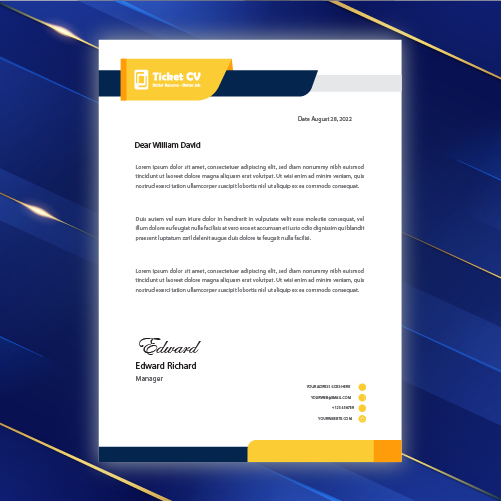When crafting a resume, the question of do resume need picture is often debated. The inclusion of a photo on a resume can have varying implications depending on cultural norms and industry standards. It’s essential to consider the potential impact before adding a picture to your resume. This blog post delves into the pros and cons of including a photo in your resume, providing evidence-based insights to help you make an informed decision.
Table of Contents
ToggleShould You Include a Picture on Your Resume or CV
Pros and Cons
Including a picture on your resume or CV can have both advantages and disadvantages. On the positive side, it can make your application more memorable and help employers connect a face to the name. However, some potential drawbacks include the risk of discrimination based on appearance and the possibility that your photo may not align with the recruiter’s expectations.
For instance, if you are applying for a job in modeling or acting, including a professional headshot could be beneficial as it showcases your appearance as part of your qualifications. Conversely, in fields where appearance is irrelevant to job performance, such as finance or technology, adding a photo might introduce bias into the hiring process.
Impact on First Impressions
The inclusion of a picture on resumes can significantly impact first impressions. Research shows that human brains are wired to process visual information faster than text. Consequently, recruiters may form initial judgments about candidates based solely on their photos before even reading through qualifications and experience.

Moreover, cultural differences play an essential role in how resume photos are perceived globally. In some countries like Germany and France, including a professional photograph is standard practice for job applications. Meanwhile, in places like the United States or Canada, attaching pictures to resumes is discouraged due to anti-discrimination laws aimed at promoting fair hiring practices.
Potential Unprofessional Impression of Resume Photos
Harm to Job Prospects
Including resume photos can harm job prospects by creating an unprofessional impression. Hiring managers focus on qualifications, skills, and experience rather than appearance. A resume picture may lead to unconscious biases affecting the hiring decision.
A study by a leading career platform found that 88% of employers preferred not to see a candidate’s resume photo, citing concerns about discrimination and bias. With this in mind, it’s clear that including a photo could potentially harm your chances of landing an interview or job offer.
Importance of Professional Appearance
The importance of maintaining professionalism in resume photos cannot be overstated. Instead of focusing on one’s appearance, candidates should emphasize their qualifications and experiences relevant to the role they are applying for. This ensures that recruiters assess applicants based solely on their skills and expertise.
International Considerations for Resume Photos
Varying Cultural Norms
Cultural norms regarding resume photos vary widely across different countries. For example, in some European countries like Germany and France, it is common and even expected to include a professional photograph on a resume. However, in the United States and Canada, including a photo on your resume can be seen as unprofessional or even discriminatory.
In many Asian countries such as Japan and China, including a photo on your resume is not only accepted but often required. Understanding these cultural differences is crucial for international applicants who are applying for jobs abroad or submitting applications to multinational companies.
Legal Requirements
Legal requirements for resume photos also differ from one country to another. Some countries have strict regulations regarding what kind of photo can be used on official documents like resumes. For instance, certain European Union member states have specific rules about the dimensions of passport-style photographs that can be included with job applications.
International applicants should always research the legal requirements related to resume photos in their target country before submitting their application materials. Failing to comply with these regulations could result in rejection or even legal consequences.
Approaching Resume Photos
International applicants should approach resume photos by conducting thorough research into the cultural norms and legal requirements of the country where they are seeking employment opportunities. When in doubt, it’s advisable to err on the side of caution by omitting a photograph from your resume unless explicitly requested by the employer.
Appropriateness of a Resume Photo in Different Industries
Expected or Preferred
In some industries, such as fashion, entertainment, and media, including a resume photo is not only expected but also preferred. These visually-oriented fields often prioritize personal presentation and image. Customer-facing roles like sales and hospitality may also favor resume photos to give potential employers an idea of the candidate’s appearance.
For instance:
- Fashion: Designers or models might be required to submit resumes with professional headshots.
- Entertainment: Actors or performers commonly include photos to showcase their appearance.
Considered Inappropriate
Conversely, industries that emphasize skills and qualifications over appearance generally consider including a resume photo inappropriate. Sectors like finance, law, and technology tend to discourage the submission of photos due to concerns about bias or discrimination based on looks rather than merit.
For example:
- Finance: Investment banks typically prefer resumes without pictures to maintain objectivity during the hiring process.
- Technology: Software development companies usually focus solely on technical abilities when evaluating candidates.
Impact on Including a Resume Photo
The norms within specific industries significantly influence whether job seekers should include a photo in their resumes. Adhering to these expectations can affect how applicants are perceived by potential employers. Failing to align with industry standards regarding resume photos could inadvertently hinder an individual’s chances of securing interviews or job offers.
Issues with Discrimination Due to Resume Photos
Legal Implications
Including a resume photo can lead to discrimination based on appearance, race, age, or other protected characteristics. This discriminatory hiring practice is illegal in many countries. Employers could face legal consequences for making hiring decisions based on an applicant’s photo rather than qualifications.
Employment laws in various countries prohibit employers from using resume photos to make hiring decisions due to the potential for bias and discrimination. For example, in the United States, Title VII of the Civil Rights Act prohibits employment discrimination based on race, color, religion, sex, or national origin. Similarly, European Union countries have strict data protection laws that discourage employers from requesting resume photos.
Mitigating Discrimination
To mitigate discrimination through resume photos, job seekers may choose not to include a photo unless it is explicitly requested by the employer. Additionally,** some industries**, such as fashion and entertainment where appearance matters significantly,may expect applicants to submit resumes with photos.
Job seekers should focus on highlighting their skills and experiences relevant to the position instead of including a picture. By doing so,** they can help prevent potential biases associated with resume photos**.
Impact of Photos on Attention from Qualifications
Visual Impact
Including a photo on a resume can potentially divert attention away from the qualifications and experience listed. Recruiters might focus more on the candidate’s appearance rather than their skills, leading to biased hiring decisions.

Studies have shown that resumes without photos receive 40% more callbacks for interviews, indicating that attention is indeed affected by the presence of a photo. This highlights the importance of ensuring that qualifications remain the central focus in a resume.
Research Findings
Research has found that when presented with identical resumes, recruiters tend to favor candidates without photos due to an increased emphasis on qualifications. In contrast, resumes with photos often trigger biases related to gender, race, or age.
A study conducted by professors at Harvard Business School revealed that job applicants with white-sounding names were 75% more likely to get called for an interview compared to those with African American-sounding names when submitting identical resumes. This underscores how easily unconscious biases can influence hiring decisions based on visual cues like photographs.
ATS-Friendly Resume Templates and Photos
Compatibility with ATS
ATS, used by many recruiters and hiring managers, may not be compatible with resume photos. When job seekers submit resumes with photos, the ATS could encounter issues. For instance, the system might misinterpret the photo as an attempt to input irrelevant information.
Incorporating a photo into an ATS-friendly resume template can be challenging. Job seekers should prioritize including relevant skills and work experience over a picture. Doing so ensures that their qualifications are effectively captured by the system.
Potential Drawbacks
Using a photo in an ATS environment might lead to unintended consequences for job seekers. The presence of a picture could inadvertently detract from the focus on relevant skills and work experience. Some recruiters prefer not to see candidate photos to avoid potential biases during the initial screening process.
- Pros:
- Avoiding potential bias based on appearance
- Focusing on relevant qualifications rather than visual presentation
- Cons:
- Risk of compatibility issues with Applicant Tracking Systems
- Possibility of diverting attention from essential qualifications
Guidelines for Taking a Professional Resume Photo
Attire and Grooming
Choosing the right attire is crucial. Opt for formal, business-appropriate clothing that complements your style without being too flashy or distracting. Ensure your grooming is impeccable, with well-kempt hair and minimal accessories. Remember, the focus should be on you as a professional.

It’s essential to consider how you want to present yourself in your industry when deciding on attire and grooming for your resume photo. For example, if you’re in a creative field, you might choose an outfit that reflects your personal style while still maintaining a polished appearance.
Lighting, Background, and Composition
The importance of lighting, background, and composition cannot be overstated when capturing a professional resume photo. Natural light is ideal as it provides soft illumination that enhances facial features without harsh shadows.Opt for neutral colors or simple backdrops to ensure the focus remains on you.
In terms of composition, centering yourself in the frame with a relaxed yet confident posture can convey professionalism effectively. A well-composed photo will capture attention while reflecting your personality authentically.
Professional Photographers vs DIY Approaches
Consider whether hiring a professional photographer or taking a DIY approach suits your needs best when obtaining a resume photo. While professional photographers offer expertise and high-quality results, they can be costly. On the other hand, taking a selfie with good lighting and composition using modern smartphone cameras can yield impressive results at minimal cost.
Ultimately, weigh the importance of achieving top-tier quality against budget constraints when deciding between these two options.
Summary
The decision to include a photo on a resume or CV is a complex one that requires careful consideration of various factors. From potential unprofessional impressions to international considerations and industry-specific appropriateness, the impact of a resume photo goes beyond just aesthetics. Discrimination issues and the potential distraction from qualifications further complicate this decision. However, with the right guidance on professional resume photos and ATS-friendly templates, individuals can navigate this aspect effectively.
In conclusion, individuals should weigh the potential risks and benefits of including a photo on their resume while considering the guidelines provided. By making informed decisions, they can present themselves professionally and mitigate potential biases. It’s essential to approach this aspect of resume building with mindfulness and awareness of its broader implications in the job application process.
Frequently Asked Questions
In general, do resume need picture?
It is generally recommended to avoid including a picture on your resume or CV, especially in the United States. In some countries and industries, it may be more common or even expected. However, in many cases, it can lead to potential bias and discrimination.
Are there specific guidelines for taking a professional resume photo?
If you choose to include a photo on your resume or CV, ensure that it is a professional headshot with appropriate attire and background. The image should be clear and well-lit. Avoid using casual photos or ones with distracting elements that could detract from your professionalism.
Will having a photo on my resume affect how my qualifications are perceived?
Research suggests that including a photo can lead recruiters to focus more on appearance rather than qualifications. To avoid potential biases based on appearance, consider submitting resumes without photos unless specifically requested by the employer.
How do applicant tracking systems (ATS) handle resumes with photos?
Many ATS are designed to ignore images when scanning resumes for keywords and qualifications. Including a photo might cause formatting issues or disrupt the parsing process of these systems, potentially leading to your application being overlooked.
What are the international considerations for including photos in resumes?
In some countries such as Germany and France, adding photos to resumes is common practice; however, other nations like the United States strongly advise against it due to anti-discrimination laws. It’s important to research cultural norms before deciding whether to include a photo.











